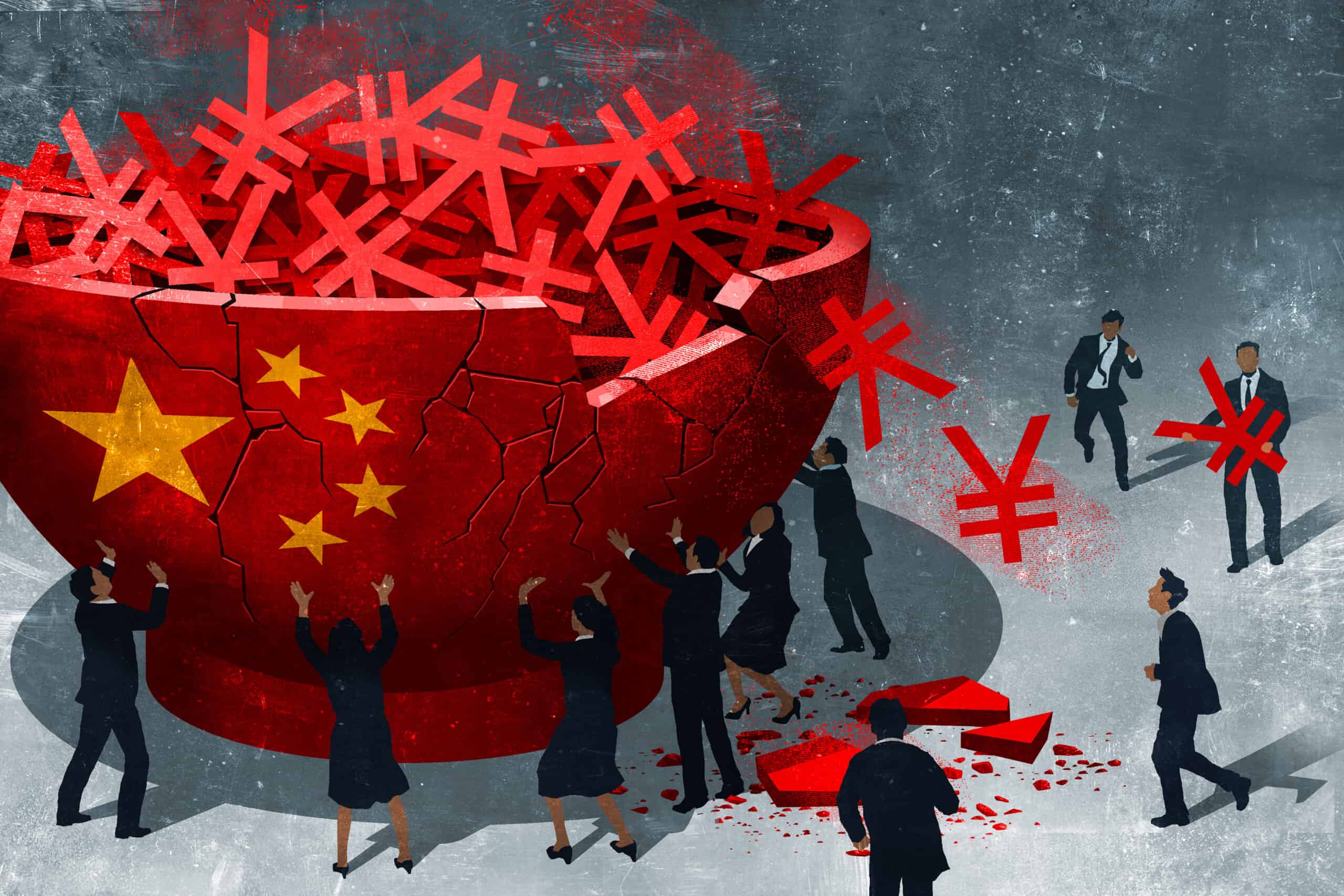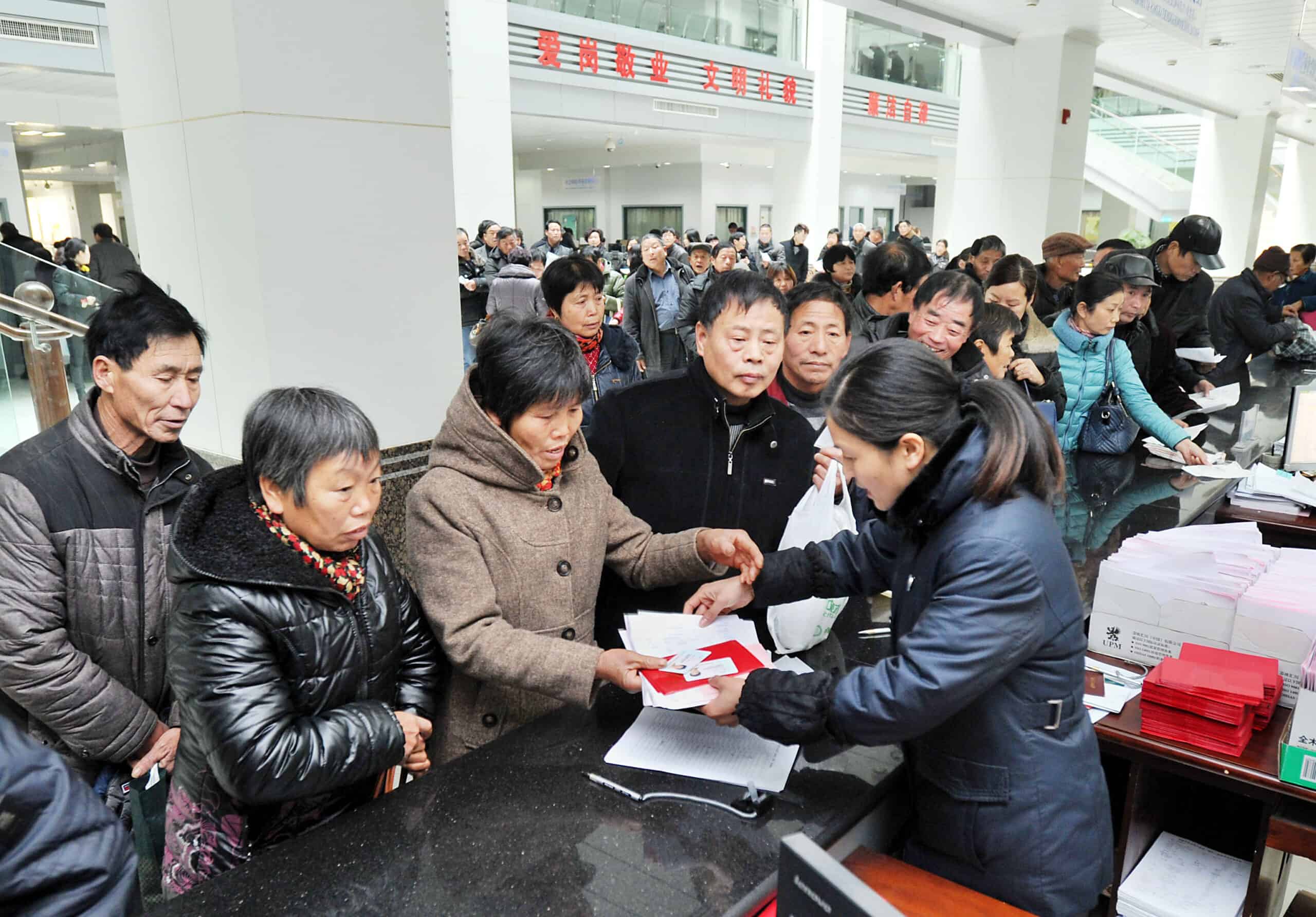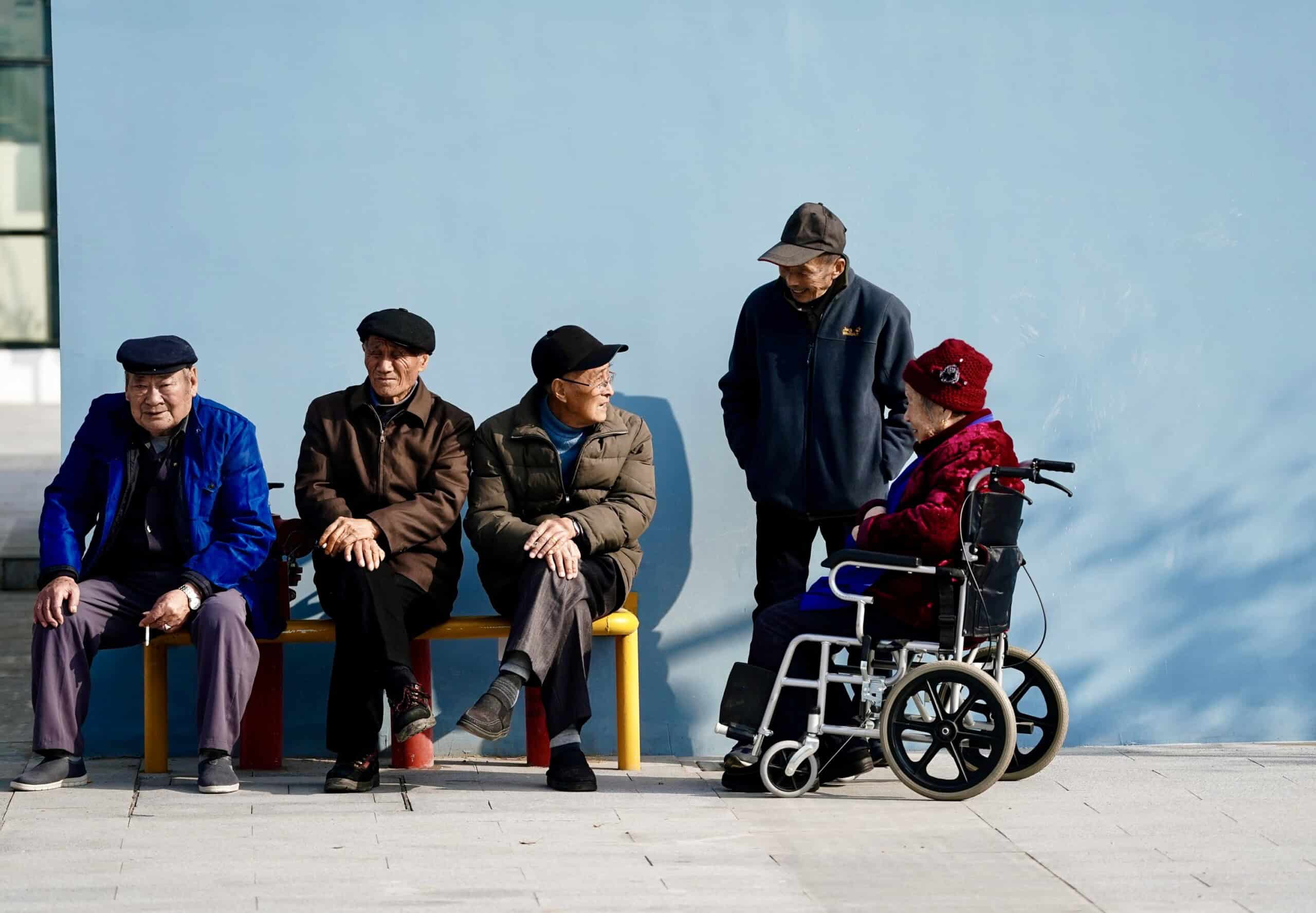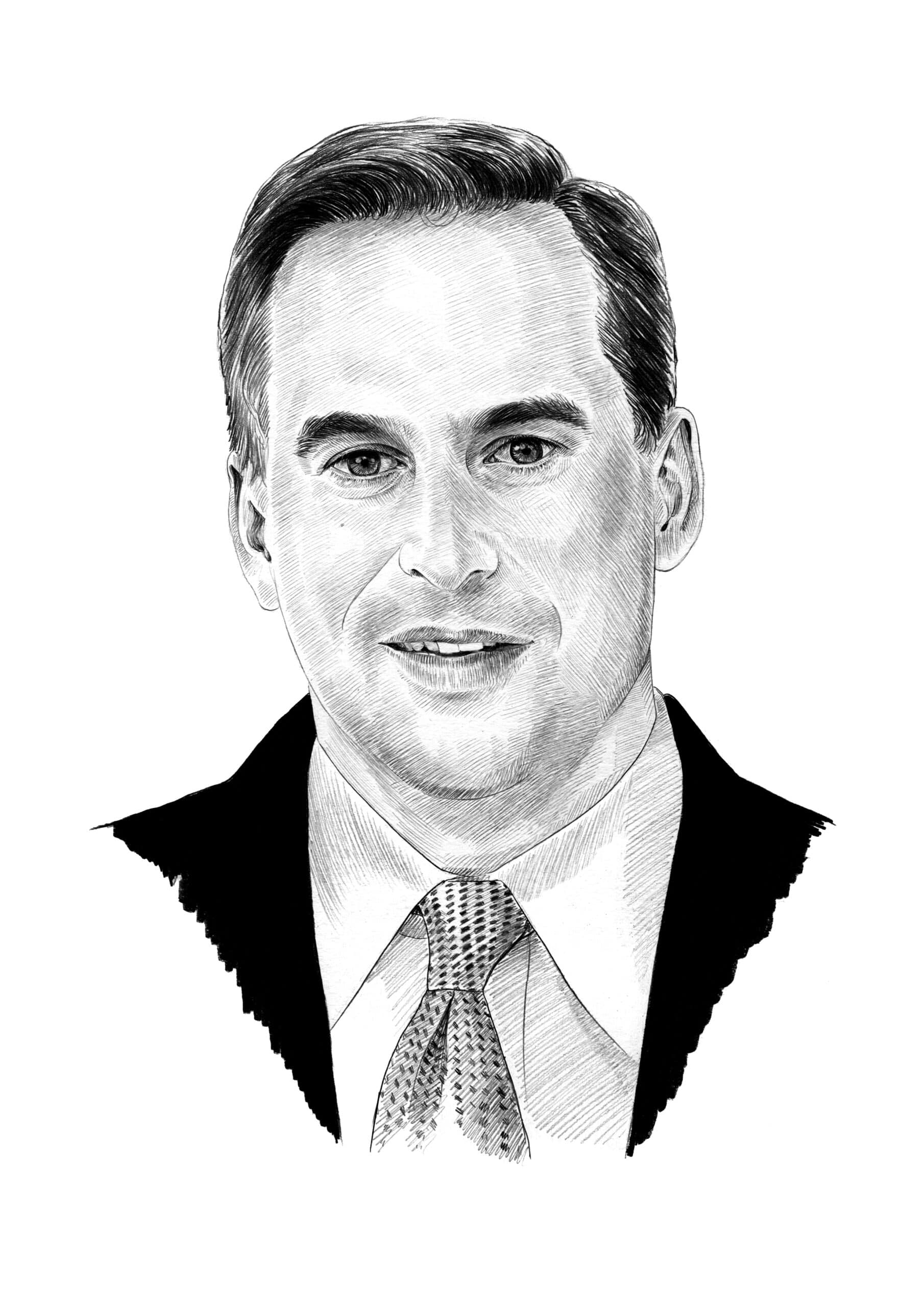
From March to May 2002, tens of thousands of Chinese workers in three, northeastern “rust belt” cities protested layoffs, corruption and the non-payment of their pensions. It was China’s longest spell of public unrest since the 1989 Democracy Movement — and it attracted several Beijing-bashing millenarians to the pages of western newspapers.
China’s “one-child policy has resulted in a rapidly aging nation,” wrote American lawyer Gordon G. Chang in the International Herald Tribune. The country’s retirement funds, added Chang, would run dry in months. “Officials must do something now to avert a crisis in the national pension scheme.”

There was, of course, money left in China in 2002, and fueled by the country’s entry into the World Trade Organization, the economy was set to take off. But Chang was right about one thing. Since shortly after Beijing restricted Chinese families to one child in 1979, Communist Party officials have known their nation was aging fast, creating a so-called “1-2-4” conundrum: every child entering the workforce would have to support two parents and, on average, four grandparents.
The unrest in 2002 was thus both a wake-up call to the dangers facing China’s pension system — and a signal for the global financial industry.
The following year, Atlanta-headquartered investment giant Invesco launched Invesco Great Wall Fund Management, or IGW, the first Sino-American asset management joint venture in mainland China. In 2006 the Shenzhen-based company set up a Beijing branch — later adding offices in Shanghai and Guangzhou — while both Invesco and its partner, China Great Wall Securities, raised their respective stakes in IGW from 33 percent to their current 49 percent. These days the venture has some 527 billion yuan ($74 billion) in assets under management, according to data provider East Money Information, equivalent to 5 percent of Invesco’s global total and nearly 10 times the level at the end of 2009.

With Beijing for years refusing to allow foreign firms the right to run their own operations outright in China, others followed suit. British firm Schroders forged a similar partnership with the Shanghai-headquartered Bank of Communications, or Bocom, in 2005. Such joint ventures strategies have “always been our case study for how to do China right,” says Peter Alexander, managing director of Shanghai consultancy Z-Ben Advisors, “balancing the best practices of a global group, but also understanding how to run a Chinese business.
But they haven’t always worked out, even for global industry giants. This week Vanguard, the world’s second largest asset manager, said it had sold its 49 percent stake in a joint venture with Chinese fintech behemoth Ant Group set up less than four years ago.

Vanguard joins other Western firms that have failed to build lasting joint ventures in the last decade in China, including BNY Mellon and Russell Investment. And even though Beijing has, since 2018, begun allowing foreign asset managers like Fidelity International and JP Morgan Asset Management to run their own businesses in China, few have yet made much headway. Sector behemoth Blackrock, whose China head Tony Tang quit in June, still has only 5.3 billion renminbi ($742 million) in assets under management in China two years after it set up its wholly owned business, according to East Money Information — a tiny fraction of its global total.
Yoon Ng, a principal at Broadridge Financial Solutions in Singapore, believes that “BlackRock is still committed to its China strategy.” Rather, Tang’s departure is one of a large number of executive changes at Chinese asset management firms, showing that “it won’t be easy for managers to retain talent in a highly competitive market like China.” BlackRock did not respond to requests for comment.
How to get the right strategy in China has become a question with enormous stakes, at a time when — twenty years after Chang’s prophesying, and decades of government tinkering — the country’s pension system stands at a precipice.

By 2040, about 402 million Chinese citizens — more than the U.S.’s entire population — will be older than 60, according to the World Health Organization: on current demographic trends, by 2050, there could be just 1.3 workers for every retiree in China, services firm KPMG estimates. Meanwhile, healthcare costs are rising and the investment-driven growth that has propelled China’s economic fortunes appears to be running out of steam.
The result is a pension system increasingly struggling to meet its commitments to a rising number of retirees, who are understandably resistant to accepting lower payouts. Raising income for pensions is hard too, with Beijing reluctant to force companies and individuals to pay more into plans for fear it could increase unemployment or reduce consumer spending.
And while China abandoned the one child policy in 2016, replacing it with a three child limit, the Chinese aren’t playing ball: last year China’s fertility rate plummeted to 1.09, state media reported, one of the lowest on earth, and its population shrank for the first time since Mao’s Great Leap Forward, in 1962.
Taken together, these factors mean a crunch point is imminent. According to the state think-tank, the Chinese Academy of Social Sciences, China’s basic state pension will have more outgoings than income by 2035. Absent more government subsidies, that could happen as soon as 2029, KPMG warns.
In response, Beijing has made an uncharacteristic turn to the private sector. Last November it introduced reforms allowing Chinese workers to open private pension accounts similar to Americans’ Individual Retirement Accounts (IRAs).
Under the new rules, employees can supplement their existing pension plans with up to 12,000 yuan ($1,686) per year in tax-sheltered private schemes. Beijing has also signaled that it will, after decades of deliberation, raise the country’s retirement age. At 60 for men and as young as 50 for women currently, it is among the world’s youngest, OECD data shows.
The reforms run counter to broader trends under Xi Jinping, whose policies have often favored the nation’s huge, state-owned companies while clamping down on private firms in sectors like tech and real estate. The sense of urgency around pensions has meant giving major international asset managers unprecedented access to Chinese markets — moves also out of step with the chilly climate facing foreign companies operating in China.
Pension reform could potentially foster economic sustainability by encouraging greater labor force participation by older individuals…
Craig Singleton, a senior fellow at the Foundation for Defense of Democracies
Inviting foreign interests into the heart of China’s pensions system isn’t just an intriguing political move, coming as relations between Beijing and the West have been deteriorating. It is also a potential jackpot for asset managers. KPMG reckons China’s new private pensions market could be worth 7 trillion yuan ($1 trillion) by 2030 if the tax-free limit is raised. “A strong track record is necessarily required,” says Charlene Wu, a partner at consultants McKinsey. “The third pillar is a heated battlefield for asset managers.”
“Your problem isn’t whether the market’s big,” says Z-Ben’s Alexander. “Your issue is executing. I have come across very, very few organizations that have been able to do so.”
SERVING THE PENSIONERS

Mao Zedong set up China’s first pension scheme, its Basic Old Age Insurance (BOAI), in 1951, basing it on the Soviet Union’s model. Under what’s come to be known as the system’s ‘Pillar One,’ urban employees of state- and collective-owned enterprises received pensions pegged at around 50 to 70 percent of their final salaries. Rural workers — around 90 percent of the labor force — were ignored.
This ‘Iron Rice Bowl’ was decimated during the Cultural Revolution, when Mao dispatched millions to the countryside. But in 1978, as rural exiles returned to the cities, the State Council relaxed pension eligibility, and payments increased to between 60 and 75 percent of standard wages. The effects were seismic: that year China had 30.3 workers per pensioner. A decade later the ratio was 6.4 to one.
Further strains emerged in the 1990s, forcing Beijing to revamp the basic state pension and broaden coverage to China’s rural population. In 2000 the government launched the National Social Security Fund in part to backstop pensions: now with $347.2 billion assets under management, it is the fourth-largest such fund in Asia behind those in Japan, South Korea and Singapore, data from Willis Towers Watson shows.

In 2004 the government added a ‘second pillar,’ with a voluntary pension plan to which employers and employees could make monthly contributions. Throughout the next 18 years, these two ‘pillars’ would achieve almost universal coverage with around 1.05 billion Chinese included, according to government data.
The NSSF’s foundation marked a “major and significant, national-level effort to really get on top of pensions,” says Fraser Howie, an independent analyst and co-author of the book Red Capitalism. But, he adds, the whole process has remained “so bitty, and partial… a bit here, a bit there.”
The system’s coverage levels are indeed somewhat illusory, as it discriminates between holders of urban and rural hukou, or residence permits, of which there are roughly equal numbers. Urban holders receive 3,326 yuan per month ($460), while their rural counterparts get just 179 yuan ($25). The system also disadvantages the country’s nearly 300 million migrant workers, who generally cannot get an urban hukou.
“China never, ever pays attention to rural areas,” says Alfred Muluan Wu, an associate professor of public policy at the National University of Singapore. “Every year the Chinese government will issue one document about rural areas, but rural areas will still remain miserable.”
Beijing is hoping that the introduction of a ‘third pillar’ — the new private pension plans — will encourage younger people to save for their futures, relieving some of the accumulating pressure.
“Pension reform could potentially foster economic sustainability by encouraging greater labor force participation by older individuals, through this more flexible and supportive pension system, and that would help counteract the shrinking workforce dilemma that Xi faces,” says Craig Singleton, a senior fellow at the Foundation for Defense of Democracies.
The divide among major global fund managers is how to take advantage. Since Beijing began allowing global firms to assume a controlling 51 percent stake or more in their China ventures, major U.S. managers, including JPMorgan Asset Management and Morgan Stanley Investment Management, have in the last two years taken full control of existing joint ventures in China. Fidelity International and BlackRock have in turn obtained licenses to set up wholly-owned mutual funds in the country. Also, Canada’s Power Corporation owns a significant chunk of ChinaAMC, which is one of the country’s biggest state controlled investment management firms.
Invesco, meantime, has chosen to stick with IGW and its local partner of nearly two decades, mostly avoiding the cultural icebergs that have sunk other Sino-Western financial sector ventures. It has retained strategic control by securing the right to appoint IGW’s chief executives. But it has also localized, growing its local staff to more than 275, while adopting marketing ploys tailored to tech-savvy Chinese consumers.
“We have the right platform in place to bring innovative, high-demand offerings to the market swiftly and efficiently,” argues Renee Kwok, Invesco’s managing director for Asia Pacific.

Examples include IGW’s move in 2018 to offer its mutual funds via the investment management platform Yu’E Bao, run by China’s dominant payments system, Ant Group’s Alipay. IGW has also adopted the popular Chinese marketing trend of livestreaming, in which hosts promote products in real time while viewers chat and shop — a kind of Web 3.0 QVC. The company often spices up its offering to livestream viewers with virtual hongbao, cash-filled envelopes Chinese people are traditionally gifted on special occasions.
“Digital platforms are indeed a critical distribution channel for all China asset managers to reach a very broad segment of the investing public,” says Renee Kwok at Invesco. “Our focus has always been on closely understanding and meeting the needs of onshore China clients.”
“China actually has probably the most open architecture in financial services of any market,” says Z-Ben’s Alexander. “The problem isn’t distribution, the problem is marketing. That’s why you see things like livestreaming and other factors.”
IGW’s marketing strategies, combined with its longevity, have helped it to build up the third largest pile of mutual fund assets of any foreign joint venture. Yet joint operations like Invesco’s IGW may not suit everyone. Vanguard’s tie-up with Ant foundered partly on its failure to attract Chinese consumers to the sort of low-cost passive investment funds the company has become synonymous with in Western markets, according to reporting in the Financial Times.
We do not yet know if, having taught the so-called tricks of the trade, these same foreign firms might find it harder to compete on home turf with home firms in China.
George Magnus, an associate at Oxford University’s China Center
“Vanguard will prioritize its global business in regions in which we offer our own investment products and services,” Vanguard Asia’s managing director Scott Conking said in a statement. Broadridge’s Yoon Ng, however, believes there could be “numerous reasons” to explain the company’s Chinese climbdown — including that it was one of ten firms working with Ant, meaning it “didn’t have exclusive access to Ant’s huge retail networks.”
“The Chinese don’t do business the way outsiders do,” says Carl Walter, who was seconded from Morgan Stanley to the firm’s joint venture partner, the state-owned investment bank China International Capital Corporation Limited (CICC) in 1999. “Outsiders are very detail-oriented, whereas insiders are inside. It’s all done through connections.”
Another pitfall of joint ventures is the risk they may become so-called ‘Trojan Horses’, enabling Chinese firms to soak up their foreign partner’s knowledge before taking advantage of Beijing’s preference for domestic companies.
Foreign asset managers view the third pillar “as a market they can get into and offer some real expertise,” says George Magnus, an associate at Oxford University’s China Center. “We do not yet know if, having taught the so-called tricks of the trade, these same foreign firms might find it harder to compete on home turf with home firms in China.”
A further cultural issue facing newcomers is the local population’s relative lack of experience in long-term investing. In China, about 75 percent of people are enrolled in the state pension system compared to just 12 percent in the U.S., according to a 2020 study from Beijing Normal University. Almost two-thirds of Americans, however, have a 401(k) employer-paid plan, compared to about a fifth of Chinese.
American workers “understand that you have some long term return if you trust your financial advisor to manage your risk portion,” says Crystal Dong, a principal at consulting firm Oliver Wyman based in Hong Kong. Yet in China “the young generation has to rely on self-awareness… and this creates a huge cost of investor education.”
The state of Beijing’s latest pensions initiative appears to bear this out. Between November’s rule change and this June, 40 million people signed up for private pension plans. But fewer than a third of accounts contained funds by March — after which Beijing stopped releasing numbers, the Economist reported.
“The cultural element,” Invesco’s Kwok says, “has been constant throughout our JV experience in China and, we believe, a major contributor to our success.” That is, of course, if Invesco can navigate the biggest cultural factor of all: Beijing itself.
PROPPING UP THE PILLARS

On February 15 this year, thousands of elderly residents crowded Wuhan’s central Zhongshan Park to protest local government cutbacks in senior medical insurance. It was the second protest in as many weeks, joining similar demonstrations over 700 miles northeast in Dalian. Police officers who tried to contain the crowd were met with pushback, both physical and vocal: in some cases people sang “The Internationale,” a de facto Communist Party anthem. Retirees staged another, separate protest at Wuhan’s city hall.
This “gray hair movement,” as social media users soon dubbed it, may not have achieved the numbers of 2002’s protests. But it was a sharp reminder to Beijing that those who have played a role in China’s rapid economic rise could grow restless if they are not comfortable in retirement. One Weibo user praised the protests, adding that “medical and social insurance without a contract is a Ponzi scheme of (the) CCP.”
China’s pensions issues are particularly bad across the northeastern Rust Belt provinces of Heilongjiang, Liaoning and Jilin — the same places that revolted in 2002 — says Zoe Zongyuan Liu, a China studies fellow at the Council on Foreign Relations, who adds that the COVID-related slowdown in China increased the problems. Already in 2020, the NSSF was called upon to provide some $7 billion to help some local governments pay their pension bills, according to a Ministry of Finance report.
“If there were no pandemic, it would not have become so acute,” she adds. But “social expenditures and medical expenses really put a lot of pressure on not just the local government budgets, but also the pension system.”
China’s high youth unemployment — which, at 21.3 percent, is becoming another crisis — places its own strains on the pension system, says Liu. “The parents have to provide the [young people] with most of the support. If the parents are working, that’s great. But if the parents are retired, this limited retirement payment — especially in the less affluent areas — becomes a bigger problem.”
Such social issues will only worsen if, as many economists predict, China’s investment-led model continues to slow. But just as the third pension pillar is as much a political as an economic imperative, Beijing’s increasing antipathy to the West poses its own perils for outsiders looking to invest.
“You have an environment now in China where self-sufficiency and ‘China for the Chinese’ as a slogan sort of fits,” says Fraser Howie. “And you think, why is Xi Jinping going to allow these financial futures and pensions to be in the hands of foreigners? Because this plays to a paranoia: that the foreigner could just take your money away, stop you from getting your pension.
Some experts believe the third pillar is a deliberately limited move by Xi Jinping’s administration, which has been wary of foreign investment despite China’s economic imperatives. Selective liberalization “lets Xi have his cake and eat it too — he can reap the benefits of liberalization without letting go of the reins,” says Craig Singleton.

But Z-Ben’s Peter Alexander remains bullish on the opportunities in China’s pension system. And he doesn’t believe the investment landscape today is materially different from that of ten years ago. “The only variable that’s changed, really, is that China has become a subject matter that is of focus,” he says.
Most experts agree that Chinese investments take up to ten years to reap rewards. Kelly Zheng, a partner at Oliver Wyman in Beijing, agrees with Howie that “overall patience with headquarters could be an issue.”
The local market here is ridiculously inefficient. They could make a killing. But they periodically just continue to shoot themselves in the foot.
Peter Alexander, managing director of Shanghai consultant Z-Ben Advisors
That is not a problem with which it seems the team at Invesco Great Wall has had to contend. “Leaders that we have here have been on the ground for a long time,” said Invesco chief executive Andrew Schlossberg in a recent corporate video. Meanwhile, last February, Schroder and BOCOM christened a second, wealth management joint venture in Shanghai: The original venture’s assets under management have recently topped 500 billion yuan ($70 billion).
It is that durability that Alexander believes hands both firms a gold-plated advantage in the Chinese pension market. Other foreign entrants are “missing a huge opportunity,” he says, by trying to run a business in China based on their global best practices. “The local market here is ridiculously inefficient,” he says. “They could make a killing. But they periodically just continue to shoot themselves in the foot.”

Sean Williams is a British reporter and photographer based in New Zealand. His work has been published by The New Yorker, Harper’s Magazine, GQ, The Daily Beast, The New Republic, Wired, The Economist and more. @swilliamsjourno





